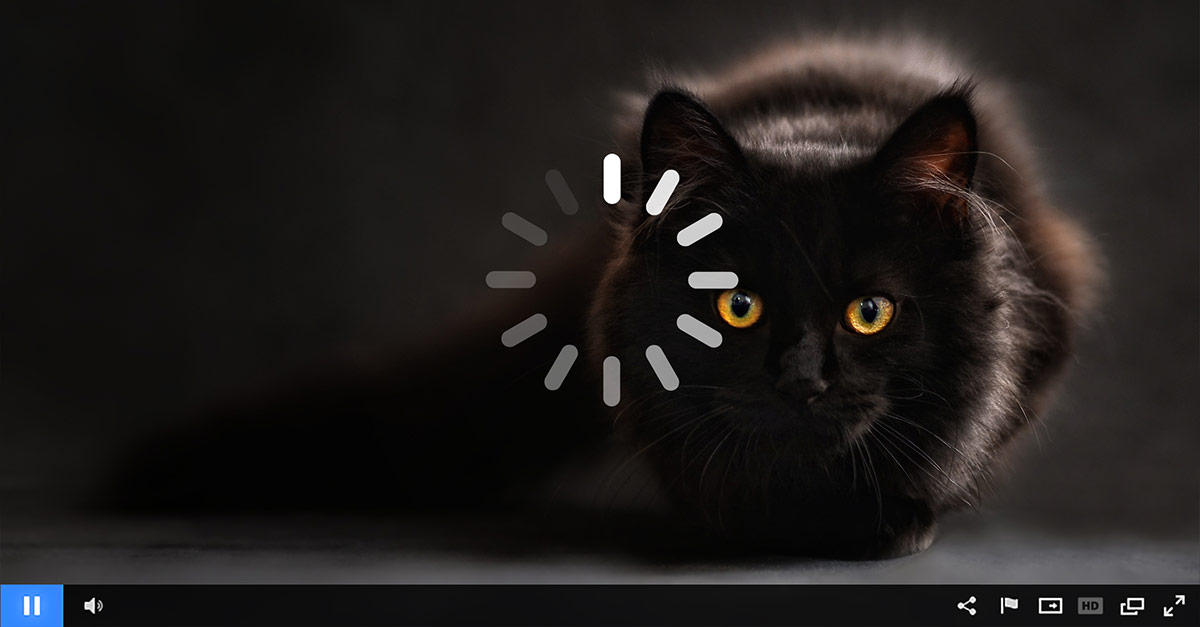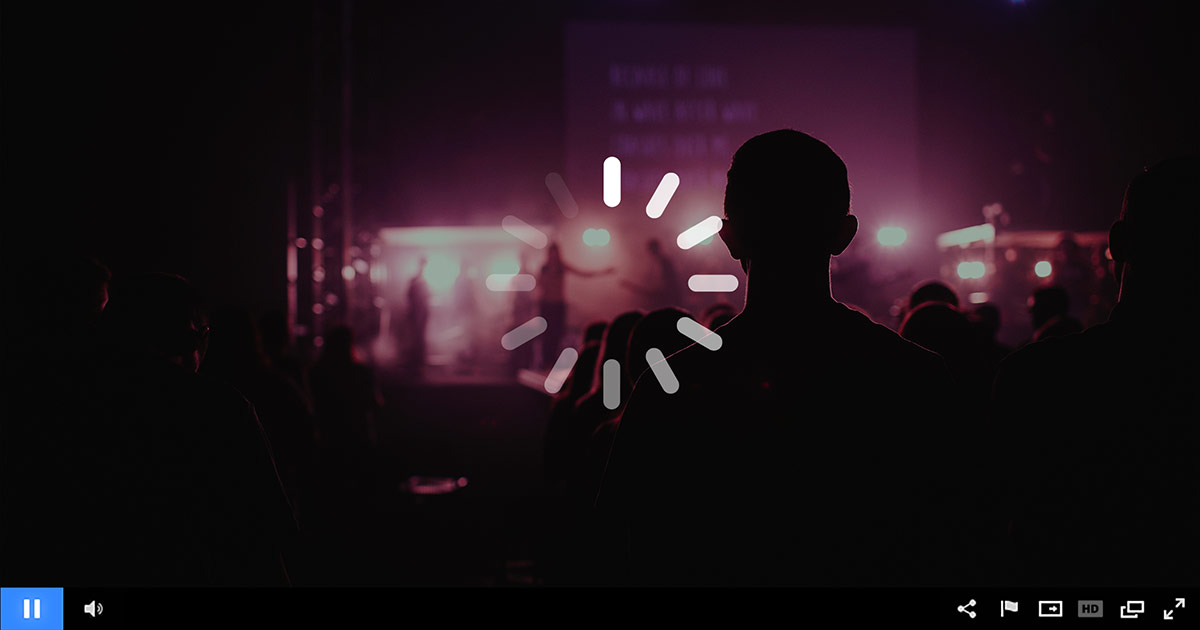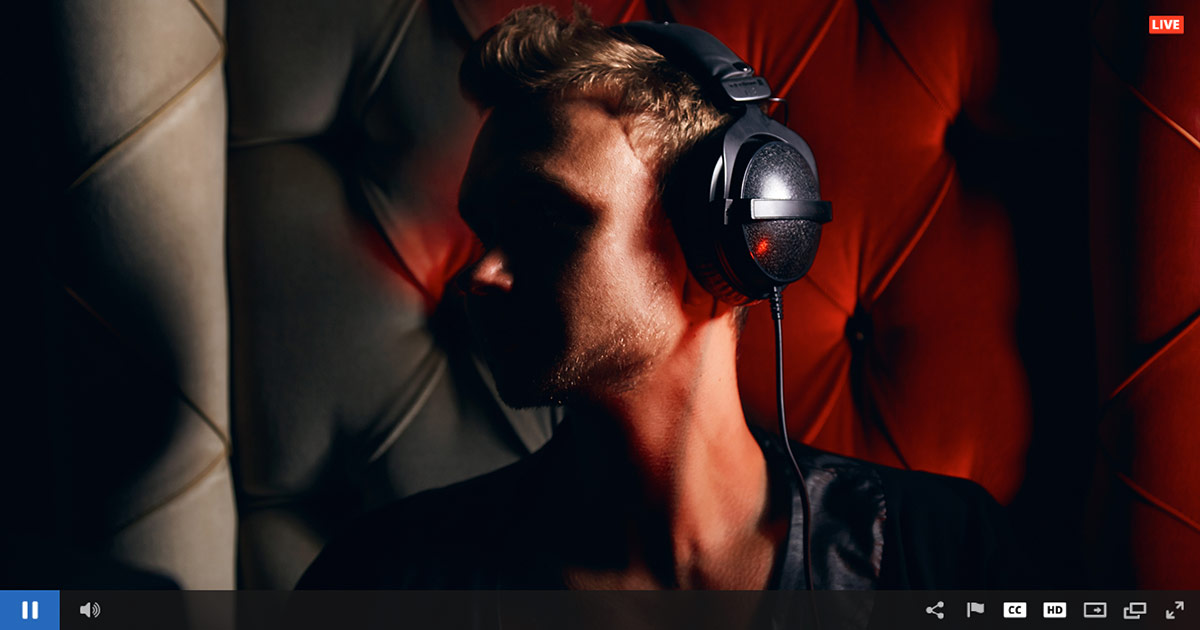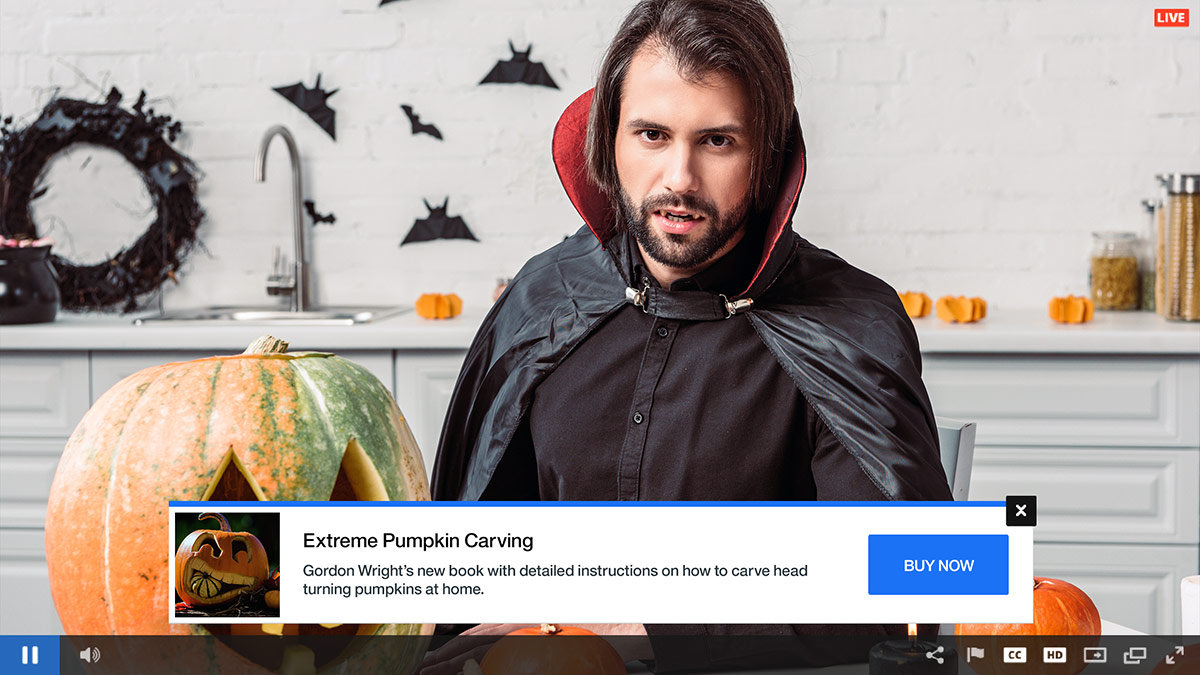
The live stream video begins, and the carefully prepared speaker begins addressing an audience of thousands of viewers. The presentation is going smoothly until, just a few minutes into the opening keynote, the video freezes. Some viewers sound the alert in the chat window, others try checking their own connection. But many viewers have left: On average, one in five viewers will immediately stop watching a stream with poor video quality and never return.
Most of the time, common live streaming video mistakes—poor sound quality and a broken (or unattended) chat function, among others—are easily avoided with careful advance work. Organizations new to streaming video should heed this advice from Jeff Irwin, customer success manager for IBM Watson Media. In the process of helping customers implement and manage streaming video, Irwin has identified common mistakes that stand in the way of streaming events and their viewers. So follow these 13 tips to avoid any unlucky mishaps on your next broadcast.
Note that this list assumes that you are using a platform that is scalable, able to reach large audiences without crashing, and is mobile friendly, having adaptive bitrate delivery. If not, these would be priorities as well.
- Failing to account for variables
- Ignoring audio quality
- Not checking your audio
- Forgetting to confirm adequate bandwidth
- Discounting the importance of your location
- Having no lighting plan
- Failing to promote the event
- Being late
- Not running pre-show content
- Making a weak first impression
- Not engaging your audience
- Skipping the chat moderators
- No follow up, CTA or post event strategy
1. Failing to account for variables
In live streaming, anything that goes wrong will feel like it’s amplified a hundred times. For example, if the battery on your microphone dies while you are recording an on-demand video, no worries. Just pause, get fresh batteries and start again. If your microphone battery dies during a live broadcast, though, it’s going to be a visible scramble to get that audio source back.
As a result, it’s not superstitious to run through a list of everything that could go wrong and try to remove or account for those variables. Checking the batteries is one step in that direction, but also check to make sure cables are secure too. If people are going to be moving, try to project where and make sure their path is clear and that the right footage will get captured. Rehearsing goes a long way to identifying these variables and being able to predict how to approach them, ideally with a worst case scenario backup plan that could be implemented.
2. Ignoring audio quality
“Audio is just as important as video when you’re broadcasting, and something people forget to take into consideration,” Irwin says. Attention tends to be focused on video quality, which is important—but if low-quality microphones are used, or speakers are too far away from mics, then the message is lost no matter how great the video looks.
“You can’t spend $5,000 on a video camera and then use a $20 microphone,” Irwin says.
If video is somewhat poor quality but people can hear the live stream, Irwin adds, viewers will still get the message. However, if video is high quality but audio is poor, viewers don’t get the takeaways. Irwin’s advice? Buy (and test) quality microphones, and make sure there are enough mics if the event has multiple speakers.
3. Not checking your audio
Forget ignoring audio quality, another issue can be not checking your audio at all. One costly pitfall here is to accidentally mute your audio during a broadcast. This is a mistake that’s all too easy to do as well, as it’s common to intentionally mute the audio as your broadcast is starting to not stream setup conversations between you and your crew but forget to unmute it when the stream begins.
This mistake is easily avoided just by having someone in your crew watching the broadcast.
4. Forgetting to confirm adequate bandwidth

Without enough bandwidth, streaming video may buffer continuously, causing viewers to drop off. Determining available bandwidth is a straightforward process if organizers control the venue, such as in-house meeting rooms. Ask the IT team if, given the expected audience and complexity of the stream, the network can handle the traffic.
If the event takes place at a venue organizers don’t control, such as a hotel, organizers will likely have to share the network, Irwin says. In that case, provide detailed requirements to the venue’s IT team to be assured of dedicated bandwidth at the precise time of the live stream. Also make sure that upload speed is focused on. For broadcasting, upload speed is the important factor for a successful stream. Many variables come into play here, such as wired versus wireless connections. That said, a good rule of thumb is to aim for having twice the upload speed that intend to have your combined video and audio quality set at. So a combined bitrate of 2 mbps would ideally have at least a 4 mbps upload speed to support it.
5. Discounting the importance of your location
Sometimes overlooked due to other factors, such as convenience or being considerate of a guest, location is important. This goes beyond picking a location that has adequate bandwidth, although this should be your first consideration. You should also either select a location that matches the aesthetic you are going for, such as an interesting backdrop or at least a non-distracting one, but at least select something that is controllable. For example, if you find yourself saying “boy I hope there isn’t a large crowd that makes a lot of noise when we do the broadcast” it’s probably not a good location to begin with.

6. Having no lighting plan
It can be dangerous to go into a broadcast without making considerations for lighting, and is part of the equation for selecting a location. Plunking down your tripod and camera, only to realize you’re about to do a stream of someone in front of a bright window, which will make them look like a black blob while capturing the light details behind them, can be fatal.
The ideal solution is to set up three point lighting. This is a configuration where there are two lights in front, one to the left and one to the right, shining light on the subject while a backlight, off to the left or right side, shines light as well. This creates a more natural look to the lighting, while keeping the subject illuminated.
If you don’t have this luxury, at least test the subject in the planned setup. Avoid broadcasting against overly bright backdrops and test with available lights to try to get the video subject illuminated.
7. Failing to promote the event

There’s no such thing as “If you build it, they will come” in streaming video. Events should be promoted early and often.
“If your event is on August 2, don’t start publicizing it on August 1,” Irwin says. “Let people know well ahead of time, through email and social media, so you can build an audience.”
When promoting the event, the focus should be on making it easy for attendees to join. For example, social media posts and emails should include links to add the event to calendars. In addition, event organizers can explore embedding live event video into social feeds, since viewers are more likely to attend an event if it’s watchable within the social networks they frequent.
8. Being late
Live streaming is an “in the now” event. There is a level of excitement generated knowing that anything can happen, and that the information you are hearing is the latest. However, it requires people to be viewing as the broadcast is going on as well. Promotion is important, and once potential viewers have it on their radar they will ideally show up at the promoted start time.
A fatal error can be not starting the broadcast on time. This has the dangerous side effect of people showing up and potentially thinking it has been canceled, they have the wrong time or lead to them reassessing if they actually want to watch in the first place. As a result, being on time can be critical.
9. Not running pre-show content
Not being late to your own broadcast is important. However, it can also be important to run content before the broadcast as well. This can be as simple as showing the stage being set up for a live concert, or displaying video messaging that indicates the broadcast will start soon. The importance of doing this falls into reassuring the audience. You want them to arrive early to the stream and give the viewer piece of mind that they didn’t have the time zone wrong and that yes the broadcast will start soon.
This can have the beneficial side effect of not only reassuring viewers, but giving them a bit of confidence about it starting soon that would hopefully get them to share the stream with friends.
10. Making a weak first impression
While running pre-show content is important, you also want to make a good first impression. If your content starts off awkwardly, or there isn’t a clear transition from the pre-show content to the actual event, this can lead to viewers abandoning the content, feeling it’s not interesting or perhaps insightful enough to be worth their time.
To avoid this, first there needs to be a clear distinction between pre-show content and the actual show. So if you are streaming, for example, people setting up the stage, it can be helpful to overlay text noting that the main broadcast is starting soon. Second is that you want to start off with a lot of energy and also address the viewer. This can be as simple as someone enthusiastically welcoming everyone to diving right into a compelling story. Hooking the viewers early can be highly beneficial to increasing their overall watch time for the content.
11. Not engaging your audience
The fact that you are doing a live broadcast gives you an opportunity to directly address your audience and also have them participate. Participation can come in the form of surveys, live audience polling, chats or Q&A sessions.
As a presenter, this gives you an opportunity to directly address what your audience is interested in. To talk to pain points you possibly didn’t even know were top of mind, for example. It also makes it more personal and hopefully more endearing as well. Addressing a user by name and citing that they had a great question can not just make them feel special, but ideally can endear that viewer enough to tune into your content in the future as well.
12. Skipping the chat moderators
Streaming video software may include a chat or Q&A module so that viewers can ask questions or share comments. If so, don’t forget to assign moderators to view chat discussions and pass along questions to speakers.
“Viewers find it frustrating if they reach out and no one responds,” Irwin says. This is especially true if viewers are raising concerns about video or audio problems, and no one’s available to answer.
The value of troubleshooting potential streaming video mistakes, Irwin says, is that an organization can decide if it can handle the technical aspects on its own, or if it should bring in the experts to help.
“You can save huge headaches if you hire production talent,” Irwin says. “Or if you don’t have the budget to farm out production, start out with smaller broadcasts.” The process will allow teams to learn over time and test internal capabilities.

13. No follow up, CTA or post event strategy
Are you doing a live video series? If so, it would be a mistake not to promote your next episode and increase attendance from your current audience. If this is a video marketing exercise instead, consider building a CTA (call to action), a next step for the viewer as part of your sales funnel. One method to achieve this is through adding clickable video overlays. These can lead the viewer to a desired location, like a registration page or an online cart where they can make a purchase.
Another consideration should be for sharing content after the broadcast as well. Just because the live stream is over doesn’t mean you can’t also engage viewers from an on-demand version as well. This can, hopefully, get potential new viewers interested enough in this on-demand content to later watch your next live stream.
Summary
It may seem simple to set up a camera and press “record,” but a successful live stream means getting the details right. Ensuring adequate bandwidth and prioritizing audio will improve the quality of the live stream—and make a good impression on viewers. Building chat moderators will give audiences an opportunity to engage with the video. And make sure to promote the live stream beforehand so that the audience knows to attend in the first place.
Looking for some more tips? Check out these 5 Pro Tips for Live Video Production.